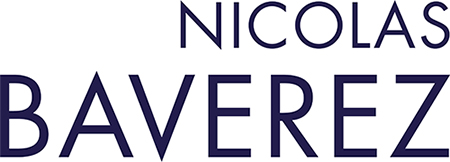The crisis, which started off as financial and economic, has become mainly political.
On 7th August 2007, when BNP Paribas decided to freeze the valorization of three funds, there began the worst crisis in the world of capitalism since the October 1929 crash.
There were three stages to its reaching global proportions: the credit collapse following the bankruptcy of Lehman Brothers in September 2008, the storm in the euro zone as from 2009, and then the effect on emerging nations from 2013 onwards. As in the 1920s, the causes were many: a real estate and financial bubble in the economy, lax monetary policy and a fundamental imbalance in global trade and payments.
Ten years on, the situation is very different from that of the 1930s when the only remedy for deflation was the Second World War. Recovery is taking place, with a 3.5% growth rate in 2017 and 3.6% in 2018, a newfound vigor in international trade that will increase by 4.6% in 2017, and a return to full employment with an unemployment rate back to 5.9% of the working population.
Economic policy has therefore managed to avoid global depression.
On the one hand, it has got its priorities right by 5,000 billion dollars of public money to save the banks, by sustaining demand with a global recovery plan involving 40% of the GDP of the main developed countries and China, and by stemming the recourse to protectionism. On the other hand, the systemic financial risk has brought about unprecedented coordination between the principal G20 nations on measures to support economic activity and regulate the banks.
Deflationary pressures and mass unemployment are fading way; in their place comes the return of inflation and a new major challenge for economic policy: the normalization of the quantitative easing of credit and the reduction of state debt.
Not only is the economic cycle being gradually restored; tremendous changes have taken place in the economic world order. The crisis has accelerated the rebalancing between North and South, borne along by the rise of China, the world power that has taken the lead in terms of purchasing power parity and which accounts for a third of global growth. Inequalities have been reduced between countries but have increased internally because of the combination of recession and the digital revolution which is polarizing individuals, businesses and nations. The debt mountain has grown sharply to over 200,000 billion dollars, the equivalent of three years’ global GDP, which is creating a new systemic risk. Bank regulation has been significantly reinforced but remains very heterogeneous, particularly in China, and is under threat in the USA from Donald Trump’s desire to repeal the Dodd-Frank Act, passed in 2010.
The crisis, which started off as financial and economic, has become mainly political. In developed countries, the destabilization of the middle classes has provoked a wave of populism which broke out in the UK with the Brexit vote, then in the USA with the election of Donald Trump. It is rooted in the after-effects of deflation, in marginalization that has come with the digital era, in national identity crises, and in the fear of immigration and the growing feeling of insecurity which breed hatred of the elite and distrust of democratic institutions.
The result is that the world has been turned upside-down. The USA and the UK, which launched globalization with liberal reforms in the 1980s are reverting to frontiers and protectionism. America is undermining the principles of the world order and multilateralism – with regard to the IMF, NATO, the WTO, the TPP and the Paris climate agreement. China is setting itself up as the herald of free trade and of stability of the global system, whilst speeding up its territorial expansion in the China Sea by means of the new silk roads.
The only remaining point in common is the glorification of nationalist feelings which are increasing the risks of conflict at a time when China is gaining the advantage in the contest for leadership of the 21st century – the methodical imperialistic strategy of Xi Jinping showing a strong contrast to the irrationalism and paralysis of Donald Trump, who is under threat of impeachment. Europe is sandwiched between China’s thirst for power and the disintegration of US leadership, as shown by its isolation during the Hamburg G20. The storm is not over yet. We are a long way from having learned all the lessons of the terrible 2008 crash.
There is a definite possibility of a new tremor hitting us. It may come from the bursting of debt bubbles, from the collapse of international trading systems caused by the break-up of globalization, or from geopolitical tensions.
It could do massive damage on the economic front – for there is no longer any room for maneuver in economic policy –, on the political front with the unleashing of populism, and on the international front with the worsening of power struggles.
The antidotes are well known. On the national front, the rebalancing of economic strategies in favor of inclusive growth, investment, innovation and education to enable the digital revolution to find its feet and generate new productivity increases. On the European front, strengthening the structures of the euro zone and the setting-up of an economic and financial union tol bring about a convergence of social and fiscal systems.
On the global front, the fight against protectionism and the revival of cooperation between the major centers that shape globalization.
Capitalism has brought humankind into the age of global history. A new major crisis in capitalism must be avoided at all costs, for this could reverse the process.
(Column published in Le Figaro, 24th July 2017)
